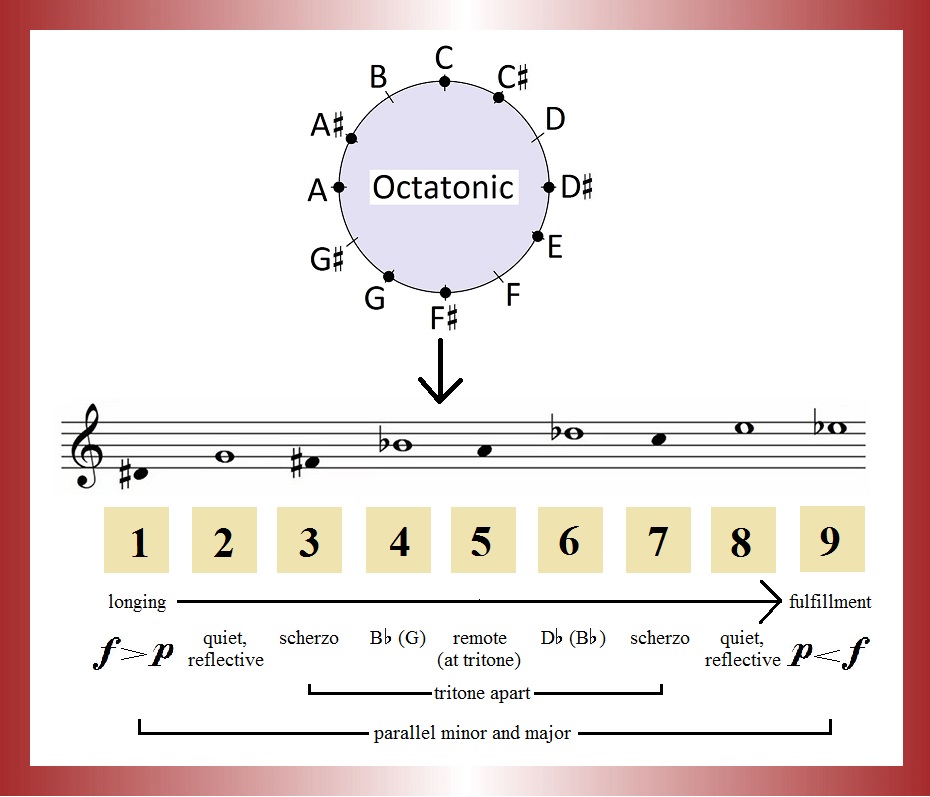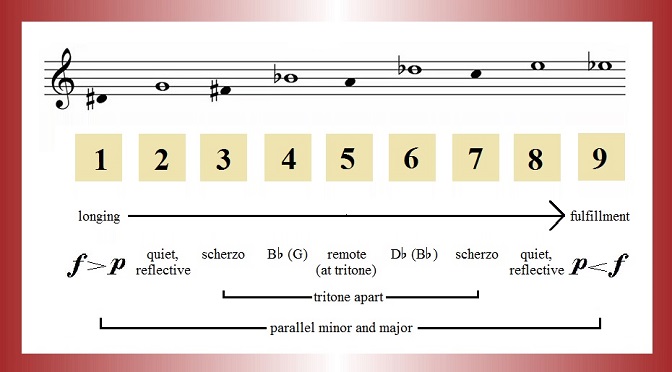Structure of the Nine Preludes
The preludes in my set of Nine Preludes for Piano Solo can be played independently, but in some ways the set is more interesting when played as a whole. For the analytical-minded, a number of interesting symmetries and patterns emerge:

• As explained in a previous post to this blog, the key centers of the nine preludes comprise an octatonic set, arranged in an unusual spiral pattern (alternating between ascents of four half steps and descents of one half step).
• The keys for the first and last preludes are (enharmonically) parallel minor and major. Spiritually, we move from an emotional state of longing in the opening prelude to joyful fulfillment in the final one.
• The first prelude has an overall decrescendo dynamic shape, while the last one has a crescendo shape.
• Preludes 2 and 8 are basically quiet and reflective, although both rise to a climax in the middle.
• Preludes 3 and 7 are the two playful, scherzo-like preludes, in minor keys a tritone apart. Prelude No. 3, marked Allegro diabolico, is evocative of orcs and goblins, while Prelude No. 7 shows influences of jazz and ragtime.
• Preludes 4 and 6 both have secondary key centers in their middle sections which are a minor third below the primary key center. (The primary and secondary keys are major in both cases.)
• The central Prelude No. 5 is the most tonally remote from the first and last preludes, with a key center a tritone away.

